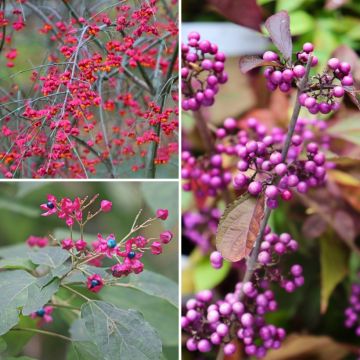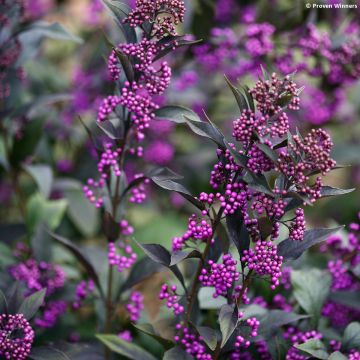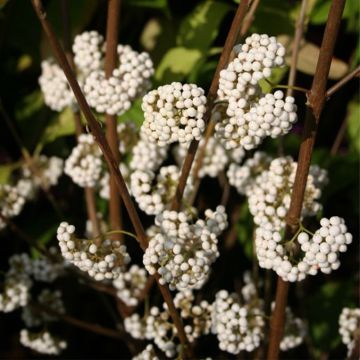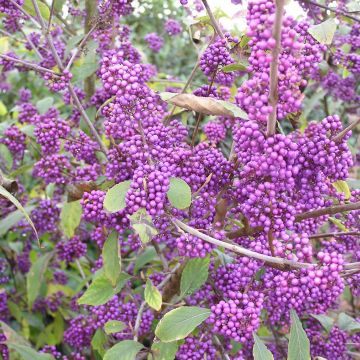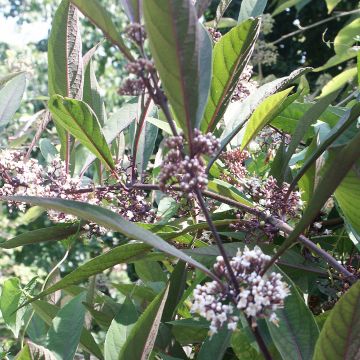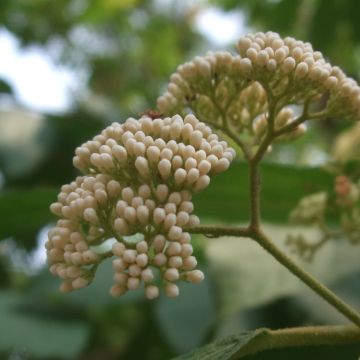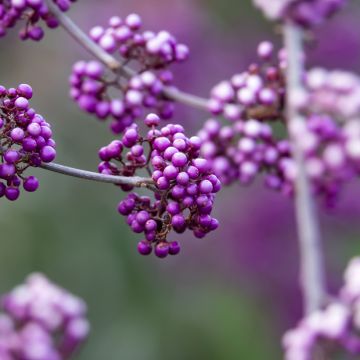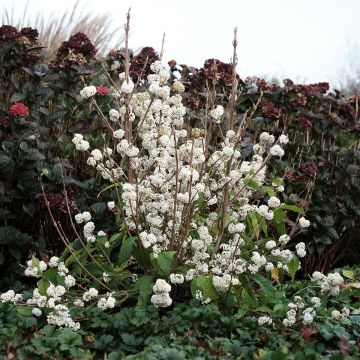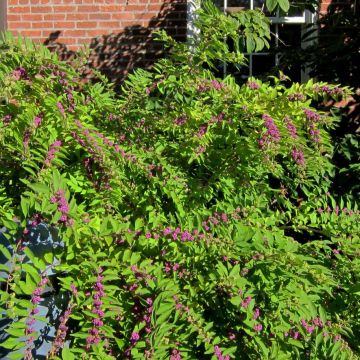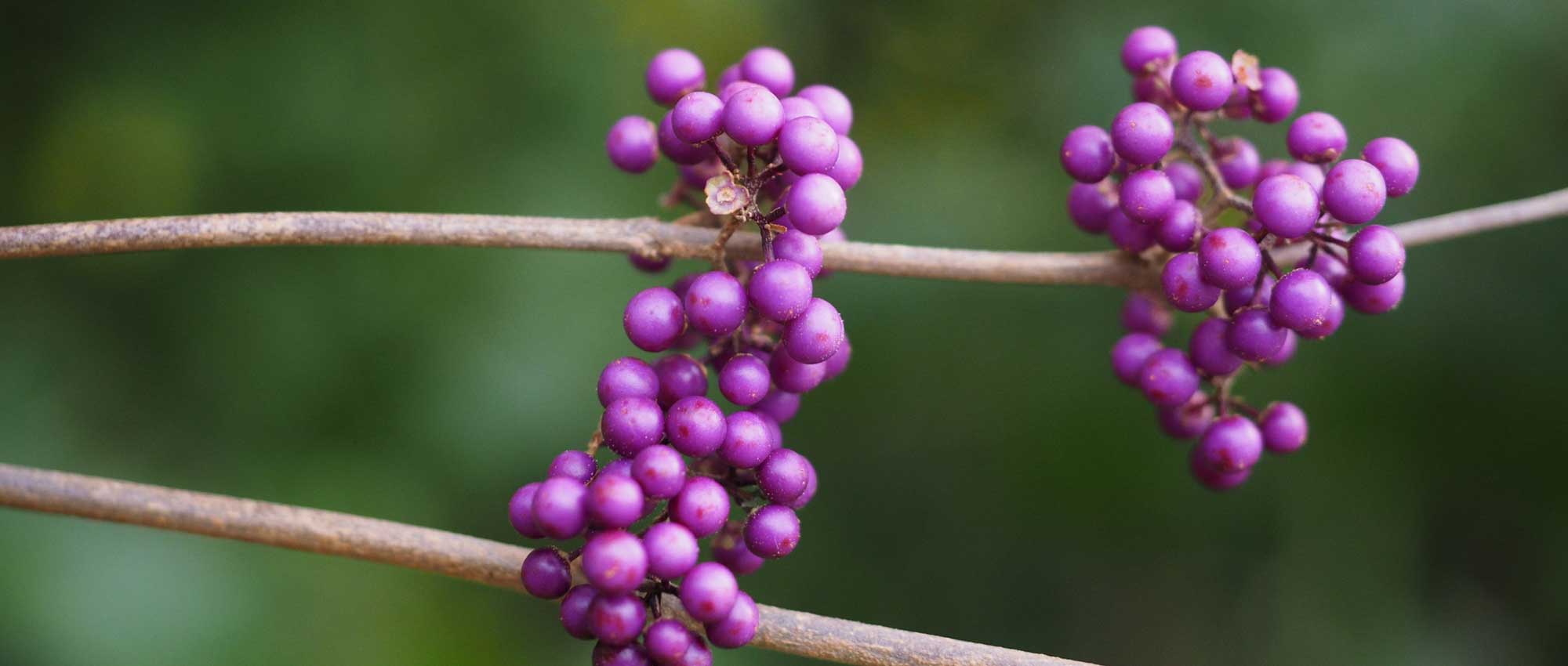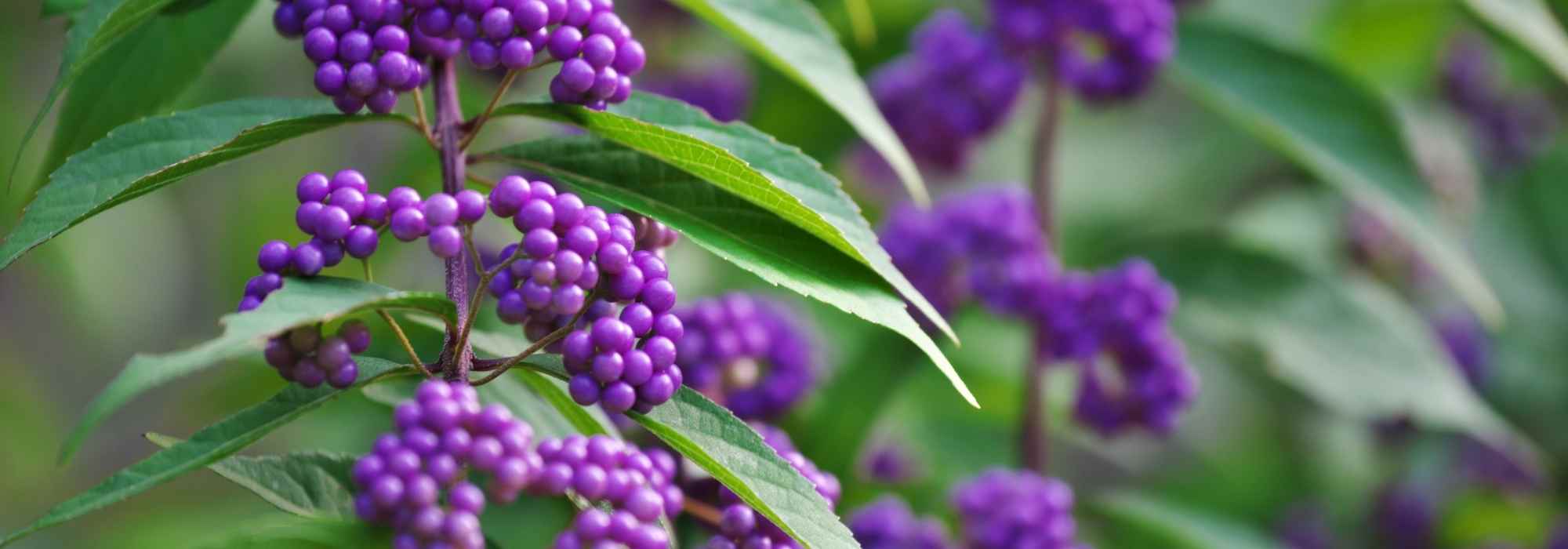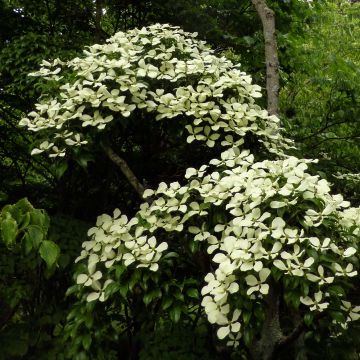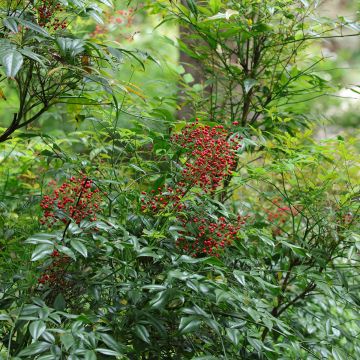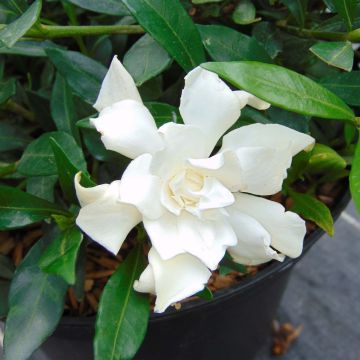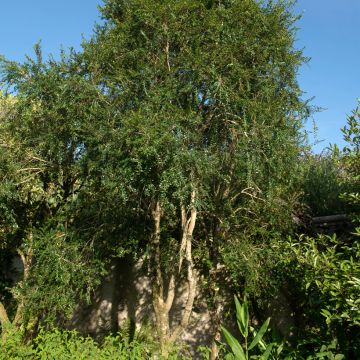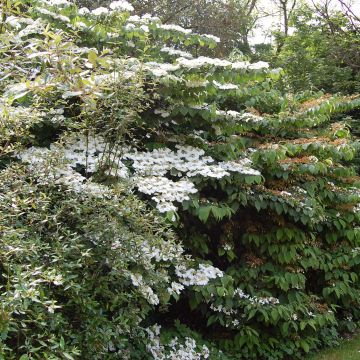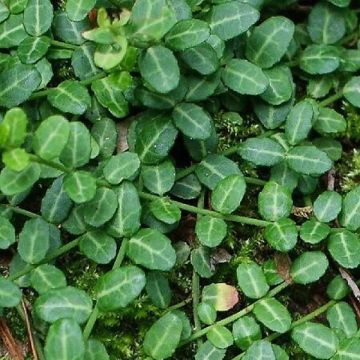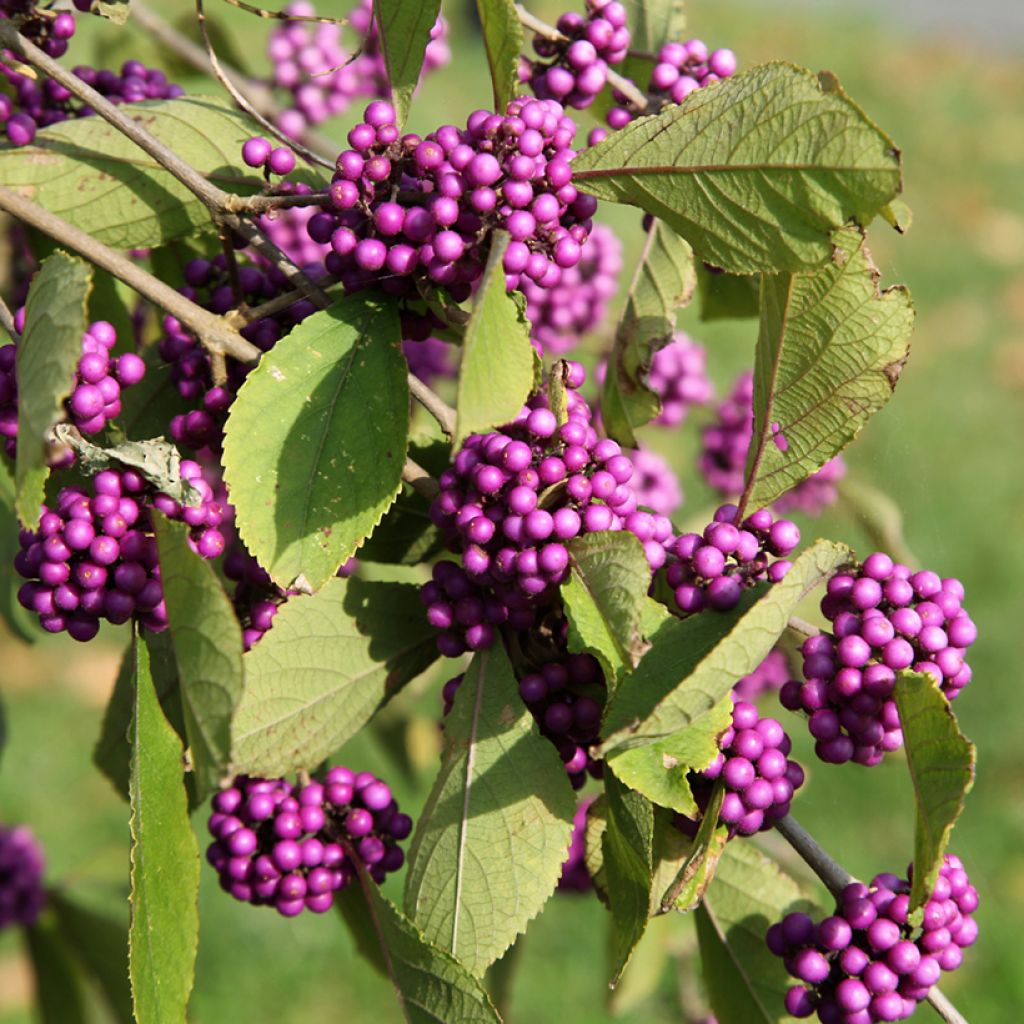

Callicarpa bodinieri Magical Deep Purple
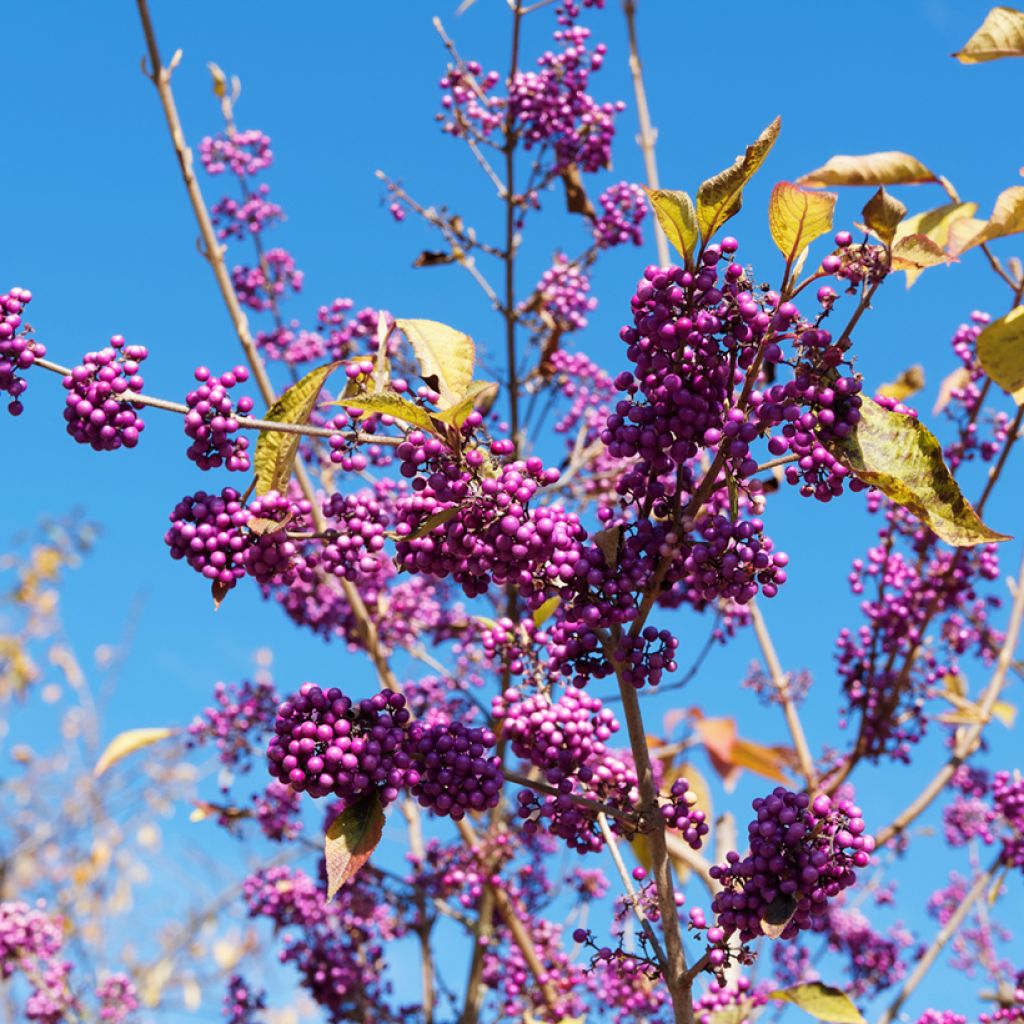

Callicarpa bodinieri Magical Deep Purple
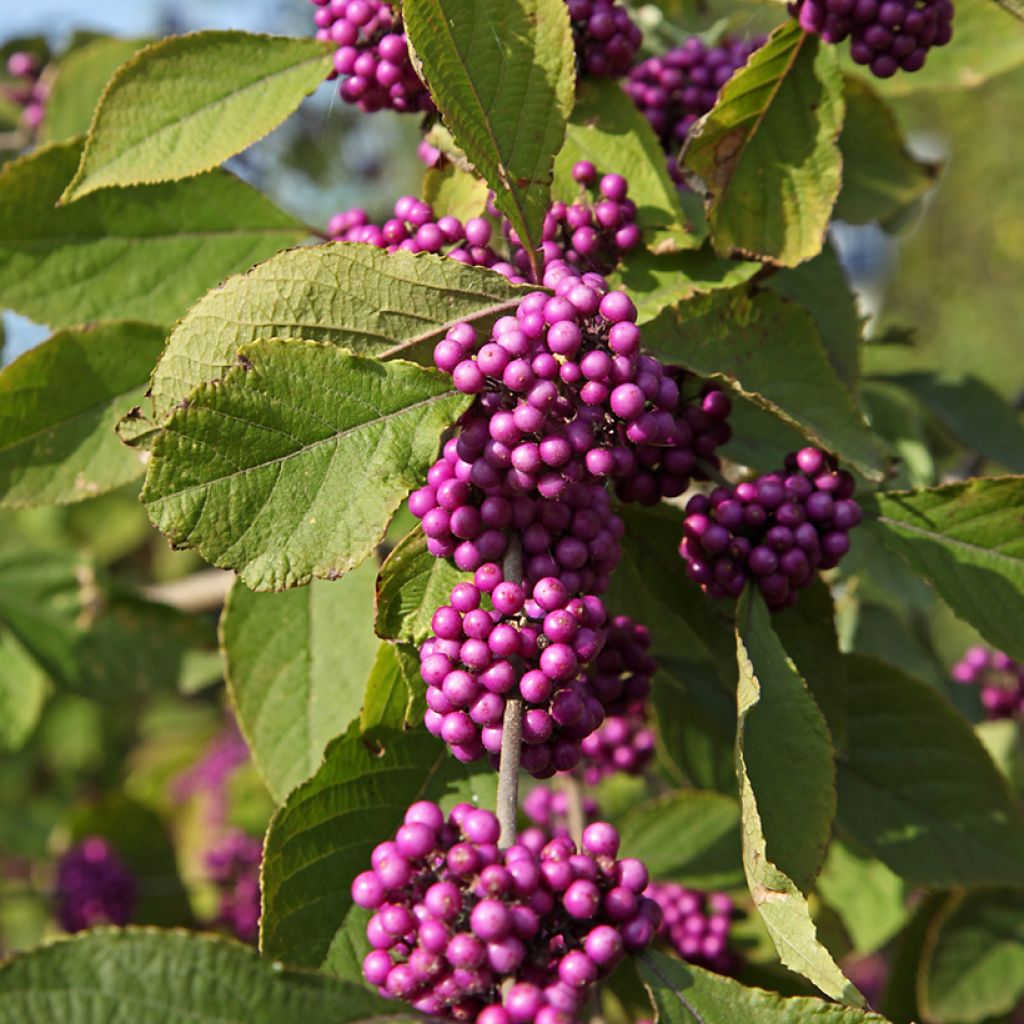

Callicarpa bodinieri Magical Deep Purple


Callicarpa bodinieri Magical Deep Purple
Callicarpa bodinieri Magical Deep Purple Kolmdepu
Callicarpa x bodinieri Magical Deep Purple ® Kolmdepu
Bodinier's Beautyberry, Beautyberry
Special offer!
Receive a €20 voucher for any order over €90 (excluding delivery costs, credit notes, and plastic-free options)!
1- Add your favorite plants to your cart.
2- Once you have reached €90, confirm your order (you can even choose the delivery date!).
3- As soon as your order is shipped, you will receive an email containing your voucher code, valid for 3 months (90 days).
Your voucher is unique and can only be used once, for any order with a minimum value of €20, excluding delivery costs.
Can be combined with other current offers, non-divisible and non-refundable.
Why not try an alternative variety in stock?
View all →This plant carries a 24 months recovery warranty
More information
We guarantee the quality of our plants for a full growing cycle, and will replace at our expense any plant that fails to recover under normal climatic and planting conditions.
Would this plant suit my garden?
Set up your Plantfit profile →
Description
The Callicarpa bodinieri 'Magical Deep Purple' is a bush that adds a lot of charm to the late season, a time of year when flowering becomes rare. Its intensely purple-pink fruiting attracts attention, arranged in small clusters along its branches. It accompanies a bronze-golden autumn foliage that dresses its bare branches in early winter. It is a very hardy plant that looks striking when planted in groups or as a free hedge, in a sunny or semi-shaded position.
The Callicarpa bodinieri Magical Deep Purple is a type of bush that was recently developed in the Netherlands. It comes from a plant called Bodinier's Beautyberry. This bush is deciduous, which means it loses its leaves in the fall. It is originally from central China and Vietnam.
The 'Magical Deep Purple' beautyberry is an upright, bushy plant that can grow up to 1.75 metres (5 feet 8 inches) tall and 1.50 metres (4 feet 11 inches) wide. It produces small, white-pink flowers with yellow stamens on the current year's branches between June and July. These flowers are visited by pollinating insects. The plant produces an abundance of berries in early October with a 3.5 to 4 millimetres diameter. These berries are shiny and very vivid purple and group in small clusters along the stems. They remain on the plant until winter.
The foliage of the plant consists of dark green, elliptical-ovate leaves. They are entire and hairy on the underside. These leaves take on beautiful autumnal hues, varying from yellow to bronze orange to gold. Bodinier's beautyberry can grow in any well-drained soil, as long as it is not too dry in summer and can even grow in limestone soil.
For those who want to enjoy the beautiful fruiting of the Callicarpa Bodinieri Magical Deep Purple in autumn and brighten up the gloomy days of early winter, it is recommended to plant it somewhere prominent. To ensure that it bears plenty of fruit, plant the Callicarpa in groups of three. It also looks excellent alongside Symphoricarpos, which produces autumn berries and ornamental fruit roses. The Callicarpa is a hardy, low-maintenance bush that looks even better planted among a carpet of Stachys byzantina or snow-in-summer. You can also cut its fruit-covered branches and use them to make lovely bouquets with mistletoe and holly.
Plant habit
Flowering
Foliage
Botanical data
Callicarpa
x bodinieri
Magical Deep Purple ® Kolmdepu
Verbenaceae
Bodinier's Beautyberry, Beautyberry
Cultivar or hybrid
Other Callicarpa
View all →Planting and care
The Callicarpa bodinieri Magical Deep Purple is a shrub that can grow well in common, well-drained soil. It prefers soil that is slightly chalky, deep and moist. However, it doesn't do well in soil that is too compacted and waterlogged in winter and doesn't tolerate dry conditions either. For best results, plant it in a sunny or semi-shaded spot. It can withstand harsh conditions once it's fully grown, but it's a good idea to protect it with mulch in the early years. If any branches are damaged from frost, prune them back, and they will regrow from the base. Plant this variety in groups of three to encourage pollination and fruit growth. Lastly, prune it back by shortening the branches two-thirds of their length at the end of winter.
Planting period
Intended location
Care
Planting & care advice
This item has not been reviewed yet - be the first to leave a review about it.
Similar products
Haven't found what you were looking for?
Hardiness is the lowest winter temperature a plant can endure without suffering serious damage or even dying. However, hardiness is affected by location (a sheltered area, such as a patio), protection (winter cover) and soil type (hardiness is improved by well-drained soil).

Photo Sharing Terms & Conditions
In order to encourage gardeners to interact and share their experiences, Promesse de fleurs offers various media enabling content to be uploaded onto its Site - in particular via the ‘Photo sharing’ module.
The User agrees to refrain from:
- Posting any content that is illegal, prejudicial, insulting, racist, inciteful to hatred, revisionist, contrary to public decency, that infringes on privacy or on the privacy rights of third parties, in particular the publicity rights of persons and goods, intellectual property rights, or the right to privacy.
- Submitting content on behalf of a third party;
- Impersonate the identity of a third party and/or publish any personal information about a third party;
In general, the User undertakes to refrain from any unethical behaviour.
All Content (in particular text, comments, files, images, photos, videos, creative works, etc.), which may be subject to property or intellectual property rights, image or other private rights, shall remain the property of the User, subject to the limited rights granted by the terms of the licence granted by Promesse de fleurs as stated below. Users are at liberty to publish or not to publish such Content on the Site, notably via the ‘Photo Sharing’ facility, and accept that this Content shall be made public and freely accessible, notably on the Internet.
Users further acknowledge, undertake to have ,and guarantee that they hold all necessary rights and permissions to publish such material on the Site, in particular with regard to the legislation in force pertaining to any privacy, property, intellectual property, image, or contractual rights, or rights of any other nature. By publishing such Content on the Site, Users acknowledge accepting full liability as publishers of the Content within the meaning of the law, and grant Promesse de fleurs, free of charge, an inclusive, worldwide licence for the said Content for the entire duration of its publication, including all reproduction, representation, up/downloading, displaying, performing, transmission, and storage rights.
Users also grant permission for their name to be linked to the Content and accept that this link may not always be made available.
By engaging in posting material, Users consent to their Content becoming automatically accessible on the Internet, in particular on other sites and/or blogs and/or web pages of the Promesse de fleurs site, including in particular social pages and the Promesse de fleurs catalogue.
Users may secure the removal of entrusted content free of charge by issuing a simple request via our contact form.
The flowering period indicated on our website applies to countries and regions located in USDA zone 8 (France, the United Kingdom, Ireland, the Netherlands, etc.)
It will vary according to where you live:
- In zones 9 to 10 (Italy, Spain, Greece, etc.), flowering will occur about 2 to 4 weeks earlier.
- In zones 6 to 7 (Germany, Poland, Slovenia, and lower mountainous regions), flowering will be delayed by 2 to 3 weeks.
- In zone 5 (Central Europe, Scandinavia), blooming will be delayed by 3 to 5 weeks.
In temperate climates, pruning of spring-flowering shrubs (forsythia, spireas, etc.) should be done just after flowering.
Pruning of summer-flowering shrubs (Indian Lilac, Perovskia, etc.) can be done in winter or spring.
In cold regions as well as with frost-sensitive plants, avoid pruning too early when severe frosts may still occur.
The planting period indicated on our website applies to countries and regions located in USDA zone 8 (France, United Kingdom, Ireland, Netherlands).
It will vary according to where you live:
- In Mediterranean zones (Marseille, Madrid, Milan, etc.), autumn and winter are the best planting periods.
- In continental zones (Strasbourg, Munich, Vienna, etc.), delay planting by 2 to 3 weeks in spring and bring it forward by 2 to 4 weeks in autumn.
- In mountainous regions (the Alps, Pyrenees, Carpathians, etc.), it is best to plant in late spring (May-June) or late summer (August-September).
The harvesting period indicated on our website applies to countries and regions in USDA zone 8 (France, England, Ireland, the Netherlands).
In colder areas (Scandinavia, Poland, Austria...) fruit and vegetable harvests are likely to be delayed by 3-4 weeks.
In warmer areas (Italy, Spain, Greece, etc.), harvesting will probably take place earlier, depending on weather conditions.
The sowing periods indicated on our website apply to countries and regions within USDA Zone 8 (France, UK, Ireland, Netherlands).
In colder areas (Scandinavia, Poland, Austria...), delay any outdoor sowing by 3-4 weeks, or sow under glass.
In warmer climes (Italy, Spain, Greece, etc.), bring outdoor sowing forward by a few weeks.






























